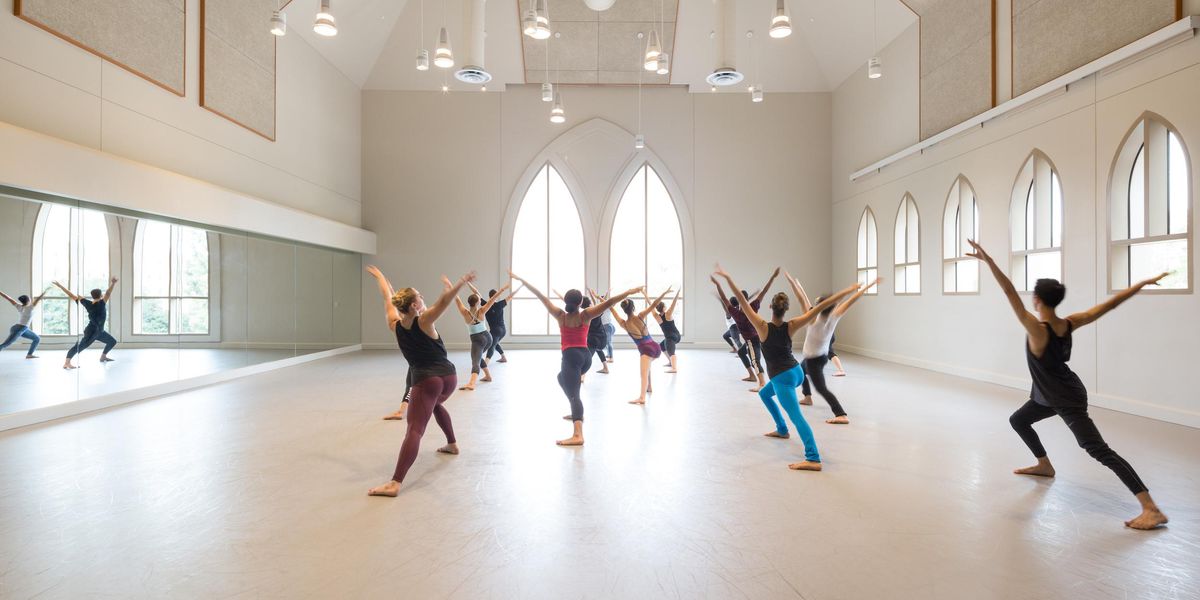Getting Into Character
As a student at The Rock School for Dance Education in Philadelphia, American Ballet Theatre soloist Christine Shevchenko’s first experience with character dance was learning the
Paquita harp variation. “It was challenging,” she admits, “because I hadn’t taken character class yet.” For extra training, Shevchenko enrolled in character at a local university—and went on to earn first place in the Junior Division at the 2003 Youth America Grand Prix and a gold medal at the 2005 Moscow International Ballet Competition, dancing Paquita variations both times.
Christine Shevchenko says her character training helps her bring stylistic detail to classical and contemporary roles. Photo by Gene Schiavone, Courtesy ABT.
Often based on European and Middle Eastern folk dances, the character repertoire showcases national dances in refined, stylized choreography. Though it’s an often-overlooked aspect of dance training, character helps dancers gain a deeper understanding of story ballets, while boosting strength and musicality. But the form isn’t just for extreme classicists. Character dance also develops the coordination required to become a versatile dancer.
Bring Context To the Classics
From the mazurkas of
Coppélia to the flamenco of Don Quixote, Marius Petipa used character dances to give his ballets a sense of place and personality. “All the steps have historical meaning,” says Leonid Shagalov, the teacher of San Francisco Ballet School’s character dance program. “If dancers know this meaning, they can bring an emotional side to the dance.”
Natalya Lushina-Zeiger, who teaches Vaganova technique and variations at The Rock School, agrees. She points to the third-act solos from
Swan Lake, when Siegfried’s potential brides perform dances of Poland, Italy, Spain, Russia and Hungary. “A lot of people think they’re all the same, but they’re completely different,” she says. “Is the arm out to the side or up? Is your hand behind your head?”
Character dances are rich in details like these, some of which trace back to regional costume. In the Polish mazurka, for example, the hand is placed on the upper back of the head because the original performers held their hats in place during the vigorous dancing. “The style is what the variation is really about,” Lushina-Zeiger says, and understanding the nuances is the key to shining. When scoring competitions like YAGP, she and her fellow judges take authenticity into account. “We try not to be too strict, but we always mark the wrong style and say it needs to be addressed.”
Master Musicality
Composers like Minkus and Tchaikovsky based music for variations on folk refrains, retaining their sometimes-unusual time signatures. Italian tarantellas, as in Bournonville’s
Napoli, can have 18/8 and 6/8 rhythms; Polish mazurkas, like those in Raymonda, can be danced in a triple time with accents on the second or third beat. “Learning flamenco rhythms was really hard,” Shevchenko says of Don Quixote. “There are so many little syncopations.” Kitri alone dances to an array of rhythms: Her fan variation is a basic 2/4, but her Act II entrance is a staccato 3/8, while Dulcinea’s coda is in 6/8.
Lushina-Zeiger says these benefits reach beyond ballet. “Once you coordinate it, once you can hear it, your body is free,” she says. “It makes dancing much easier.” Shevchenko also credits character study with preparing her mind and body for more modern repertoire. “You learn all these tricky sequences that people rarely do,” she says. “It helps you pick up contemporary pieces quickly.”
Turbo-charge Your Technique
Because character dances often feature hopping and running steps, flat shoes or boots, and a lighthearted presentation, they can seem more relaxed—and easier—than classical choreography. In reality, they entail complex upper-lower body opposition, épaulement and heel-toe footwork. “A lot of character dance is much sharper and faster than classical,” Lushina-Zeiger observes. It’s essentially a form of cross-training that can enhance classical and contemporary technique alike.
“In Moldavian Moldovenyaska and jok, students develop coordination that helps them jump higher,” says Shagalov. His dancers “study Hungarian czardas for épaulement, which helps with turns. For the Russian trepak in
Nutcracker, they learn how to get force out of pliés.”
Shevchenko has applied what she learned to such roles in
Swan Lake, Raymonda, Coppélia and Polyhymnia in Balanchine’s Apollo. “It’s really good for your brain,” she says. “And it makes you use your body in a completely different way.”
Find a Class
Character dance is considered an essential part of training across Europe—Bolshoi Ballet Academy students study it for five years, and must pass two character exams before they enter the company. However, it is rarely taught in depth in the U.S. outside of major-company schools.
If yours doesn’t offer character training, ask a local college dance department about auditing or enrolling in classes. For summer study, consider Joffrey Ballet School’s character-dance intensive, June 6–24, in New York City.
—CB





